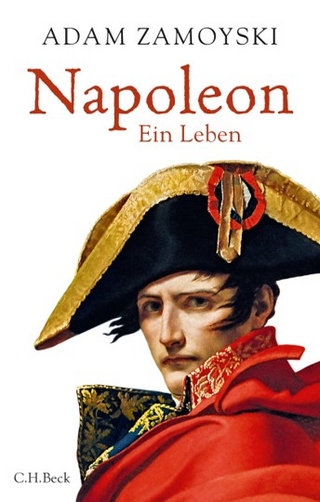
The Archaeology of Early Medieval and Medieval South Asia
Routledge India (Verlag)
978-1-138-32092-5 (ISBN)
Dedicated to historian Brajadulal Chattopadhyaya, this volume presents a crucial and unprecedented intervention in the study of the early medieval and the medieval periods. It will be useful for scholars and researchers of archaeology, ancient history, medieval history, water history, earth sciences, palaeoecology, historical ecology, epigraphy, art history, material culture studies, Indian history, and South Asian studies in general.
Swadhin Sen has been teaching in the Department of Archaeology of Jahangirnagar University, Bangladesh, as a Professor. He has directed several excavations and undertaken full-coverage surveys in the northern part of Bangladesh. He has conducted ethnoarchaeological and ethnoecological studies in the north-western and south-western parts of Bangladesh. Currently he is directing research projects on the palaeoecology of Bengal and the archaeology of dynamic terrain of Bengal. His fields of interest also include politics of the pasts, critical studies of heritage, archaeologies of religions, popular culture of landscape and waterscapes, and cultural politics of ecology. He loves conversation with people and is passionately entangled with water and rivers. Supriya Varma is in the process of transitioning from Jawaharlal Nehru University, New Delhi, to Azim Premji University, Bhopal. She has been the Co-Director of several archaeological projects including the Indor Khera Archaeological Project (IKAP) and the Rohana Khurd Archaeological Project (ROKAP). Her research interests include land use, pastoralism, mobility, landscapes, waterscapes, urbanism, childhood, households, crafts, identities, heritage, and sustainability. Her earlier work focused on the archaeology of childhood and households in ancient cities, but in the last several years, her research has shifted to the medieval and early modern periods. Among her publications are the co-edited book Traditions in Motion: Religion and Society in History and a special issue on Archaeologies of the Medieval in South Asia for The Medieval History Journal. She is currently co-directing an international and interdisciplinary project called MANDU: Monsoon, Climate, and Society in Medieval and Early Modern Times. Bhairabi Prasad Sahu was a Professor at the Department of History, University of Delhi. He was the Head of the Department during 2004–7, and Dean of International Relations at Delhi University during 2007–11. He served the Indian History Congress as its Secretary (2006–9) and the Indian Council of Historical Research as a Council Member (2008–15). He was President of Ancient Indian History at the Indian History Congress (2003) and presided over the Ancient Section of the Punjab History Conference, Historiography Section of the Andhra Pradesh History Congress, and the Uttarakhand History and Culture Association. Professor Sahu was on the editorial board of Indian Historical Review, Studies in People’s History, and Proceedings of the Indian History Congress. He was associated with the German Research Council’s Orissa Research Project (1999–2005). His areas of interest were historiography, political processes, and social formations in pre-modern India, with a greater focus on early medieval Odisha and Chhattisgarh.
A Dedicatory Note: The unsettling interrogative sensibilities of Brajadulal Chattopadhyaya and transgression of the disciplinary boundaries
1 Introduction: Trouble of thinking about the archaeology of the early medieval and the medieval in Ganges–Brahmaputra–Meghna Basin
PART 1: Conceptual, methodological, and spatiotemporal domains of archaeology
2 Locating the medieval in South Asian archaeology: Resetting field methods and practices
3 The changing landscape of early medieval Indian history: Perspectives from archaeology
4 Engaging with the past beyond the comfort zone: Early medieval and medieval in the archaeological context of the north-western part of Bengal
PART 2: Settlements, landscapes, and interpretive frameworks
5 Changing patterns of agrarian development in early medieval North Bengal: A delineation from the inscriptions
6 Early medieval and medieval settlements on the littoral and active part of a delta: An archaeological study of the southwestern part of Bangladesh
7 Chronicles of perpetually reconfiguring entanglements: A precursory understanding of the landscape archaeology of Teesta Megafan of Bangladesh
PART 3: Pottery analyses and the spatiotemporal indexes
8 Pottery of Bengal during the early medieval period
9 Analysing the pottery from the Brahmaputra Valley: Issues within archaeology and history (seventh to fifteenth centuries CE)
PART 4: Material culture and monumental remains in context
10 Religious pictures from Bengal and Eastern Bihar: More than illustrating pantheons
11 Temple-building in the early medieval–medieval Bengal: Revisiting contexts in Western Bengal
12 The regional monetary identity of ‘medieval Bengal’ (thirteenth to sixteenth centuries CE): Coin hoards, mint towns, and connectivity
| Erscheinungsdatum | 11.11.2022 |
|---|---|
| Zusatzinfo | 18 Tables, black and white; 60 Halftones, black and white; 60 Illustrations, black and white |
| Verlagsort | London |
| Sprache | englisch |
| Maße | 156 x 234 mm |
| Gewicht | 907 g |
| Themenwelt | Geisteswissenschaften ► Archäologie |
| Geisteswissenschaften ► Geschichte ► Regional- / Ländergeschichte | |
| Naturwissenschaften ► Geowissenschaften ► Geografie / Kartografie | |
| Sozialwissenschaften ► Soziologie ► Spezielle Soziologien | |
| ISBN-10 | 1-138-32092-7 / 1138320927 |
| ISBN-13 | 978-1-138-32092-5 / 9781138320925 |
| Zustand | Neuware |
| Informationen gemäß Produktsicherheitsverordnung (GPSR) | |
| Haben Sie eine Frage zum Produkt? |
aus dem Bereich


